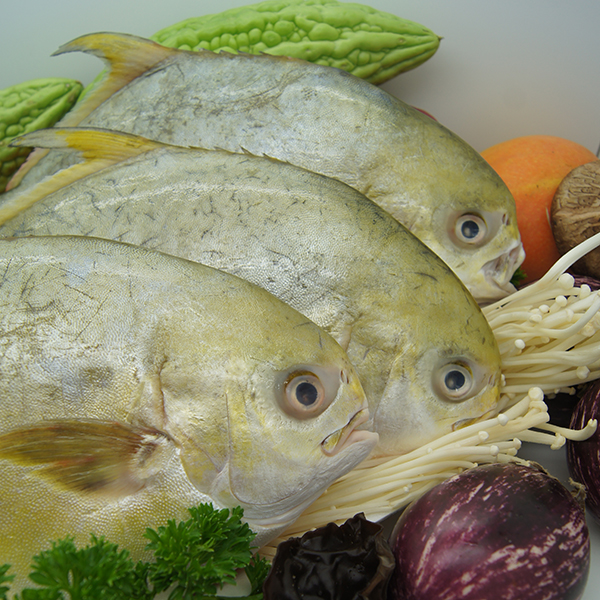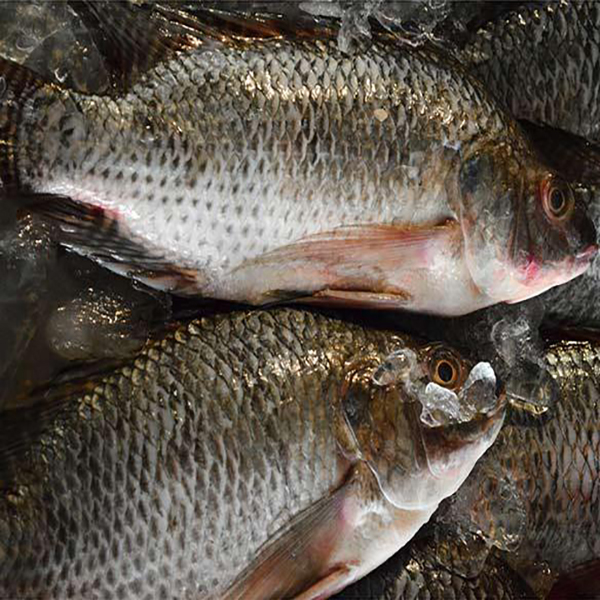Description
Fresh Wild Caught Hussar, also known as Yellow Banded Snapper is a superb eating reef fish, especially cooked whole .. The sweet reef flavour is always a winner .. we are happy to Clean, Steak or Fillet your purchase at no charge .. At all 3 Aussie Seafood Houses .. Capalaba West, Durack, Strathpine stores Open 7 Days a Week .. Wild Caught Seafood Special
Baking is probably the easiest and most efficient way in which to cook fish. Cooking times will vary depending on the thickness of the fish and on the method of cooking. Generally, calculate 10 minutes baking time per 1 inch (2.5 cm), measured at the thickest part of the fish. Thin fillets usually take 15 minutes, whilst small steaks approximately 10 – 15 minutes.
Baking white fish
Lean, white fish such as deep sea cod, snapper or sea perch, does not contain as much fat within the flesh as oily types of fish such as salmon or barra. For this reason it is advisable to protect the flesh of lean fish so that it does not dry out during the cooking process. This can be done using a variety of methods, so you can select your preference and cook accordingly. To stop white fish from drying out, cook it by adding some liquid to the tray or in a sauce. The liquid could be water, wine, butter, milk, lemon, lime or orange juice, oil or a little stock. Other ingredients can also be added to give extra flavour and aroma such as herbs, tomatoes, onions or chopped vegetables. Check out some of your favourite recipes first if you are unsure, as there you will find suitable combinations of ingredients. Alternatively, the flesh can be protected by either stuffing the fish or by coating it in flour or breadcrumbs before baking.
Baking in foil
Lots of people prefer to bake their fish by wrapping it in foil. This method is very efficient, as it cuts down on oven and utensil cleaning time. By wrapping the fish in a protective covering, it has a similar effect to steaming, as moisture is sealed within the foil rather than escaping into the oven. This is an excellent way to ensure that your fish does not dry out and it also helps to seal in aroma and flavour. Preheat the oven to around 200°C and grease the base of a large piece of foil with butter. Take the piece of fish and season it with salt and pepper. Place the fish onto the foil, add some herbs and lemon juice, fold up the sides of the foil and seal at the top. Place into the preheated oven and cook for the specified time until the flesh is white and firm.
If baking a whole fish in foil, ensure that the fish is properly cleaned, scaled and gutted before wrapping it in foil. The head, tail and skin can be left intact and the body cavity can be stuffed with herbs and lemon or with a breadcrumb mixture. Cooking a whole fish in foil will take much longer, perhaps around 40 – 50 minutes. Calculate 15 minutes per half kilo of fish plus an additional 15 minutes. Once the fish is done, remove it from the oven and foil and skin before serving.
Baking in the oven without foil
Oily fish such as trout or lean fish that is stuffed or coated can be baked in the oven on a baking tray. Even lean types of fish on their own can be baked, although the flesh will tend to be a bit drier. Generally, whole fish are baked using this method.
Baking a large round fish
For a large round fish, make several diagonal cuts into the fish, so that the fish cooks more evenly and quickly and so that it keeps its shape during cooking.
Season the fish with salt and pepper, inside the cavity and on the outside skin. Brush with melted butter and sprinkle with lemon juice and some herbs.
The body cavity can be stuffed with lemon slices and herbs or with some stuffing made from breadcrumbs. Spoon the filling into the body cavity and place
The body cavity can be stuffed with lemon slices and herbs or with some stuffing made from breadcrumbs. Spoon the filling into the body cavity and place
loosely inside. Do not overstuff the fish, as the stuffing will swell during cooking. Close the cavity by securing it with cocktail sticks and reshape the fish.
Place on greased paper lining a baking tray and bake in the oven until the skin is crispy and the flesh is white and firm. Baste during cooking with the melted butter and juices from the fish. This is particularly important for white fish.
Place on greased paper lining a baking tray and bake in the oven until the skin is crispy and the flesh is white and firm. Baste during cooking with the melted butter and juices from the fish. This is particularly important for white fish.








